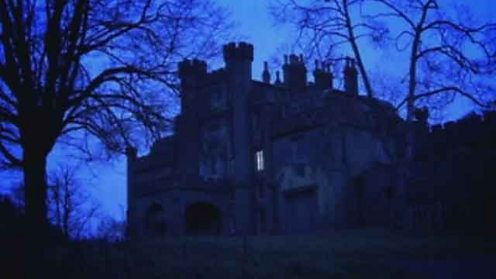
:max_bytes(150000):strip_icc()/Houghton_EC75_W1654_764c-_-_Castle_of_Otranto-_ill-5725272a3df78ced1fcd3f5c.jpg)
The Gothic revival of the early-nineteenth century created some important distinctions among writers and readers of Gothic fiction, which was initially divided into two basic categories: The School of Terror and the School of Horror.
Contradictory Forces: The blending of seeming opposites: desire and disgust aesthetic and political, beautiful and terrible, sublime and grotesque. Ominous settings: ruins, graveyards, haunted castles, and other great places for repressed passions and guilt to resurface. Character Doubling: Gothic heroine vs. Prophecies and curses: evoking the past to understand the present (can you think of moments in Dracula when this happens?). Gothic novels as Matthew Lewis’s The Monk employ the symbolism of dark veils to assert the powers of good and evil. Moral ambiguity: While Gothic novels often have religious backdrops, the distinction between good and evil is often left ambiguous. Transgression: Breaking the rules alternative forms of knowledge such as a fondness for supernatural prophecy fragmented narratives. from Fred Botting’s Gothic (1996) A Gothic “Tool Kit” Gothic atmospheres - gloomy and mysterious - have repeatedly signaled the disturbing return of pasts upon presents and evoked emotions of terror and laughter.” It shadows the despairing ecstasies of Romantic idealism and individualism and the uncanny dualities of Victorian realism and decadence. It appears in the awful obscurity that haunted eighteenth-century rationality and morality. This can be in the form of a murder or other such macabre themes laced throughout the text.“Gothic signifies a writing of excess. Macabre and morbid - No Gothic tale is complete without a little death and destruction. Omens and prophecies - The protagonist or a supporting character will often typically have distressing dreams, visions or prophecies connected to the setting or events of the story.Īgony and ecstasy - Gothic stories are often characterized by melodrama, inner turmoil, intrigue, and insanity as well as sweeping romance, grandiose passions and enchanting prose. Sometimes these supernatural figures are literal, and other times they are symbolic or have a natural explanation. 
Paranormal activity - Gothic novels are famous for featuring ghosts, vampires, monsters, and other shadowy figures. Terror - The protagonist is haunted by supernatural or seemingly supernatural events such as doors suddenly closing, baying of dogs, footsteps, moans, and eerie sounds in the night. Suspense - Gothic plot lines typically revolve around suspenseful events, familial mysteries, disappearances, unexplainable events, and frightening objects.

Examples include rain, storms, a chill in the air or howling wind.Īrchetypal character traits - Gothic literature typically has particular types of characters: a distressed heroine, tyrannical male characters (usually villains) and anti-heroes, also known as Byronic heroes after Romantic poet Lord Byron. Natural imagery - A hallmark of both Romanticism and Gothic literature is imagery, particularly pertaining to nature.ĭark atmosphere - No Gothic story is complete without atmosphere, including complementary weather conditions. Some common types of settings include castles, haunted houses, graveyards, and dark forests. This is because Gothic literature has specific characteristics like:Ĭreepy settings - In Gothic fiction, the setting is a character in its own right.

There is a reason the word “gothic” brings to mind trap doors, castles, monasteries, and more.


:max_bytes(150000):strip_icc()/Houghton_EC75_W1654_764c-_-_Castle_of_Otranto-_ill-5725272a3df78ced1fcd3f5c.jpg)





 0 kommentar(er)
0 kommentar(er)
